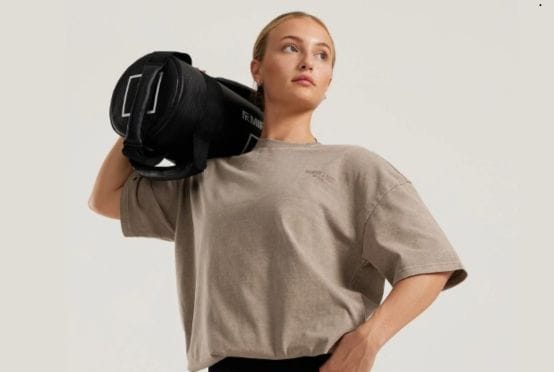Finding the right size for women’s fitness and lifestyle clothing can be tricky. However, Women’s Best provides a detailed size chart to help you find the perfect fit. Understanding this chart is crucial, as it balances comfort and performance, highlighting the challenges and tradeoffs involved in choosing the right size.
Women’s Best Size Chart
Tops
| Size | Chest | Waist | Hips |
|---|---|---|---|
| XS | 32-34 | 24-26 | 34.5-36.5 |
| S | 34-36 | 26-28 | 36.5-38.5 |
| M | 36-38 | 28-30 | 38.5-40.5 |
| L | 38-40 | 30-32 | 40.5-42.5 |
| XL | 40-42 | 32-34 | 42.5-44.5 |
| XXL | 42-44 | 34-36 | 44.5-46.5 |
Bottoms
| Size | Waist | Hips | Inside leg |
|---|---|---|---|
| XS | 26 | 35 | 28 |
| S | 28 | 37 | 28 |
| M | 30 | 39 | 28 |
| L | 33 | 41 | 28 |
| XL | 35 | 43 | 28 |
| XXL | 37 | 45 | 28 |
Sportsbra
| Size | Upperbust | Bust | Underbust |
|---|---|---|---|
| XS | 32 | 33 | 28 |
| S | 34 | 35 | 31 |
| M | 36 | 37 | 32 |
| L | 38 | 39 | 35 |
| XL | 39 | 41 | 37 |
| XXL | 41 | 43 | 39 |
Why Accurate Sizing Matters
Accurate sizing is crucial for comfort, performance, and confidence, especially in activewear and lifestyle clothing. When clothes fit well, they enhance your workout experience and daily activities. However, finding the right size involves balancing factors like body measurements and fabric stretch.
Poor sizing can lead to discomfort and reduced performance. Considering the impact of accurate sizing on your overall experience is essential when using the Women’s Best Size Chart.

How to Measure Yourself Correctly
To use the Women’s Best size chart effectively, it’s essential to measure yourself accurately using a flexible tape measure. First, measure your bust, waist, and hips. Make sure the tape is snug but not too tight. This ensures accurate measurements. Balancing precision and comfort can be tricky, as too tight or too loose measurements can lead to incorrect sizing. Also, consider the impact of body shape and fabric type on fit.
These factors highlight the challenges of finding the perfect size. Taking the time to measure correctly will greatly improve your experience with Women’s Best clothing.
Common Fit Issues and Solutions
Even with the best size chart, fit issues can arise, but Women’s Best has solutions for common problems like tightness or looseness in certain areas. For example, if a top feels too tight around the bust, consider sizing up, but be aware this might make the waist and shoulders looser. Alternatively, if leggings are loose around the waist but fit well elsewhere, you might need to use a drawstring or select a style with more compression.
Balancing these factors involves tradeoffs, such as comfort versus appearance, or flexibility versus support. Addressing these challenges is crucial, as the right fit significantly impacts your comfort, confidence, and overall experience with Women’s Best products.
FAQs
1. How do I know if I have the right size?
Answer: To ensure you have the right size, compare your body measurements with the Women’s Best size chart. Make sure your clothing feels comfortable, provides adequate support, and allows for full range of motion without being too tight or too loose.
2. What should I do if I’m between sizes?
Answer: If you are between sizes, consider your fit preference and the type of fabric. For a snug fit, choose the smaller size, especially if the fabric is stretchy. For a looser fit, or if the fabric has less give, opt for the larger size.
3. How do I measure my bust, waist, and hips accurately?
Answer: Use a flexible tape measure and measure your bust at the fullest part, your waist at the narrowest point, and your hips at the widest part. Ensure the tape measure is level and snug, but not tight.